| Hormones of Exercise Learning Objectives Be able to explain how negative feedback systems work Be able to describe how antidiuretic hormone's negative feedback system functions Be able to explain and draw how the negative feedback system breaks down with Type 2 diabetes Be able to describe the insulin to insulin protein receptor mechanism in activating the GULT4 protein Be able to discuss the role of growth hormone, epinephrine, norepinephrine, aldosterone, and cortisol with exercise Be able to discuss hormonal regulation of glucose metabolism Be able to explain the homone regulation of fat metabolism Be able to explain and draw oxygen deficit and E.P.O.C. and answer questions on both of these physiological phenomenon Be able to explain the best altitude training method and why Click Here to Download the Hormones of Exercise Quiz There is 1 YOUTUBE video to watch with this lecture Hormones of Exercise We begin our hormones of exercise with a definition of endocrine, which means hormone secreting Hormone regulation in the human body is a negative feedback system. This literally means that the response of the body opposes the initial stimulus Class, please watch this Youtube video below. In this YouTube video the major hormones of exercise are discussed. Initially, there is a review of how negative feedback systems work in the body. This is followed by exploring the steps of the negative feedback system with antidiuretic hormone (ADH). The breakdown of the negative feedback system (not working) is analyzed with persons with type 2 diabetes. Other exercise hormones, and their functions to exercise, such as growth hormone, aldosterone, epinephrine, norepinephrine, cortisol, insulin and glucagon are discussed. Lastly, hormonal regulation of carbohydrate and fat metabolism is presented. Please clip link below to get started with this lecture. https://youtu.be/EgKaf6clhFc |
||||||||
|
|
||||||||
| Negative Feedback System: Antidiuretic Hormone | ||||||||
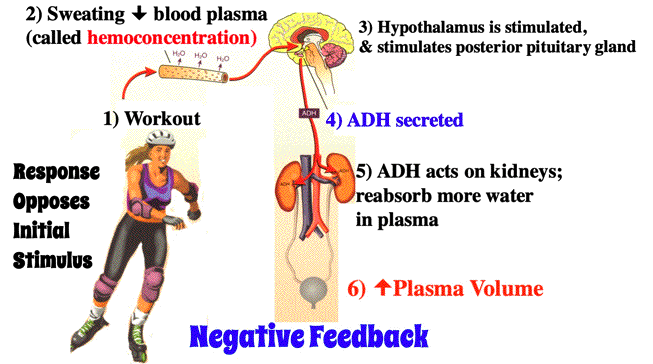 |
||||||||
|
|
||||||||
| Negative Feedback System Not Working with Type 2 Diabetes | ||||||||
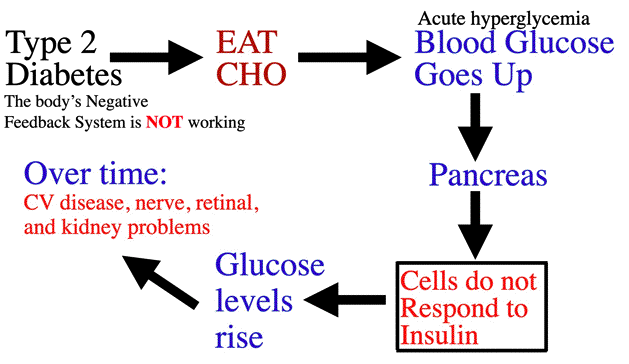 |
||||||||
| Closer Discussion on Type 2 Diabetes: From the Youtube video and slide below, be able to describe how insulin binds with its insulin protein receptor which signals the GLUT4 Protein. | ||||||||
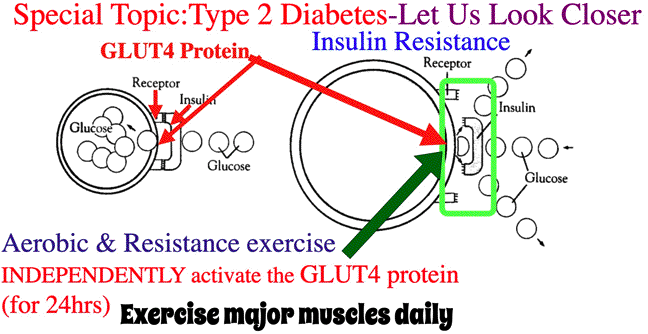 |
||||||||
| Hormones of Exercise: Growth Hormone and Aldosterone |
||||||||
| Growth hormone (GH), released from the anterior lobe of the pituitary gland is an anabolic hormone. Uniquely, GH also stimulates lipolysis, the disassembly of triglicerides (TG) in fat tissue. In muscle, growth hormone stimulates the uptake of TG for utilization or storage. The response of GH is proportional to the exercise intensity. Higher intensity execise leads to a greater GH response. Aldosterone is quite involved with electrolyte balance, particularly with sodium and postassium in nerve and muscle contraction. Hormones of Exercise: Epinephrine and Norepinephrine |
||||||||
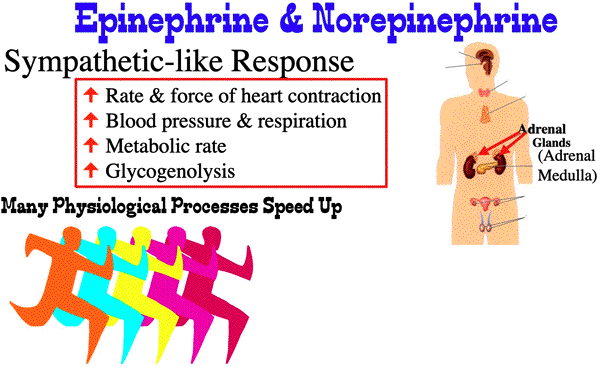 |
||||||||
| Cortisol and Protein Synthesis Inhibition | ||||||||
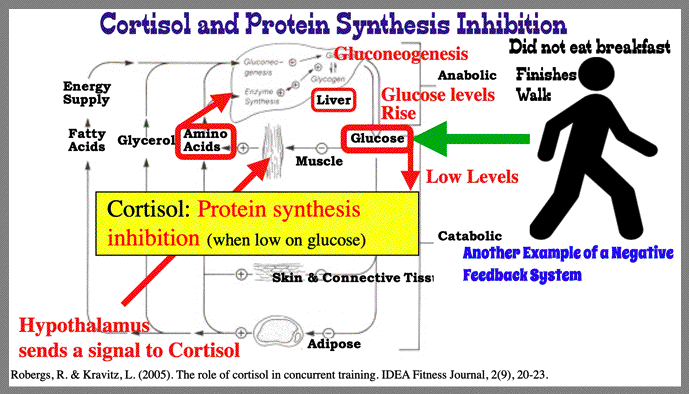 |
||||||||
| Plasma Glucose Hormonal Regulation and Hormonal Regulation of Fat Metabolism | ||||||||
| This Concludes our Hormones of Exercise Lecture and Quiz |
||||||||
|